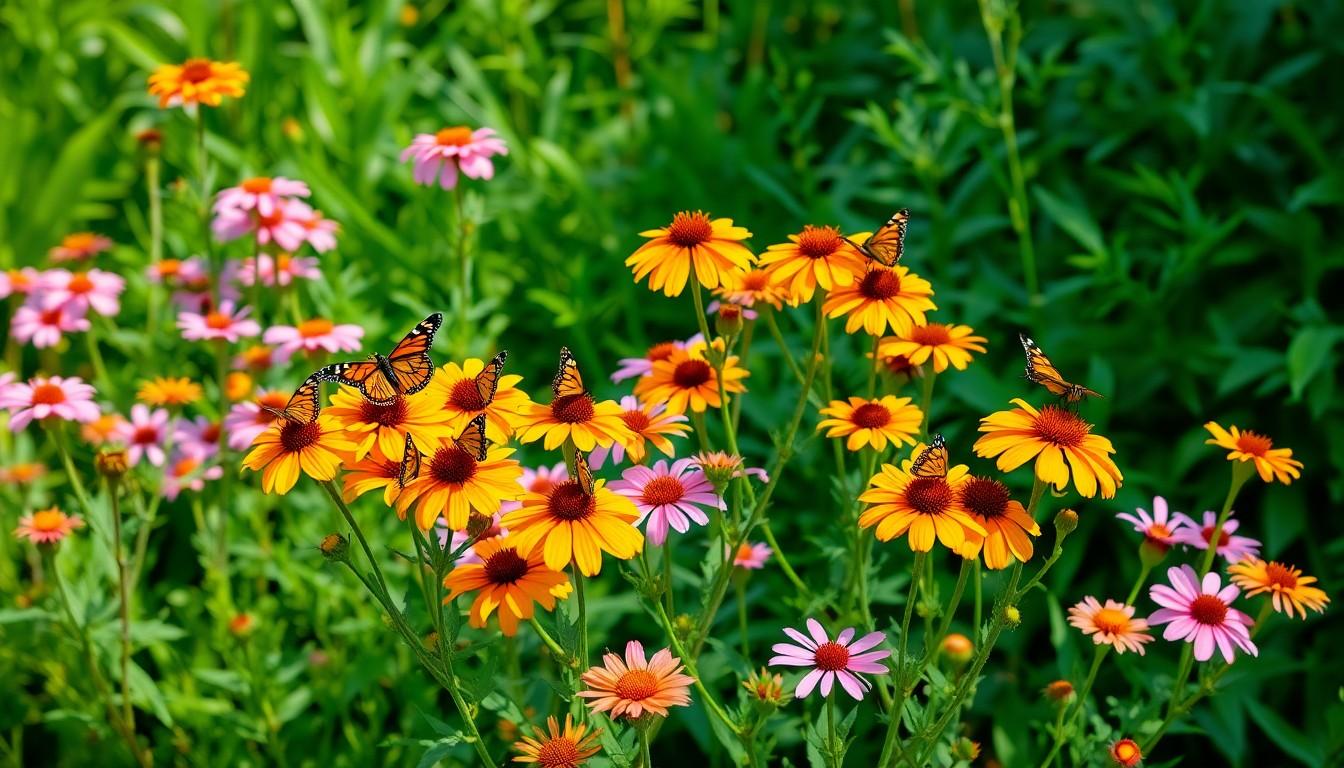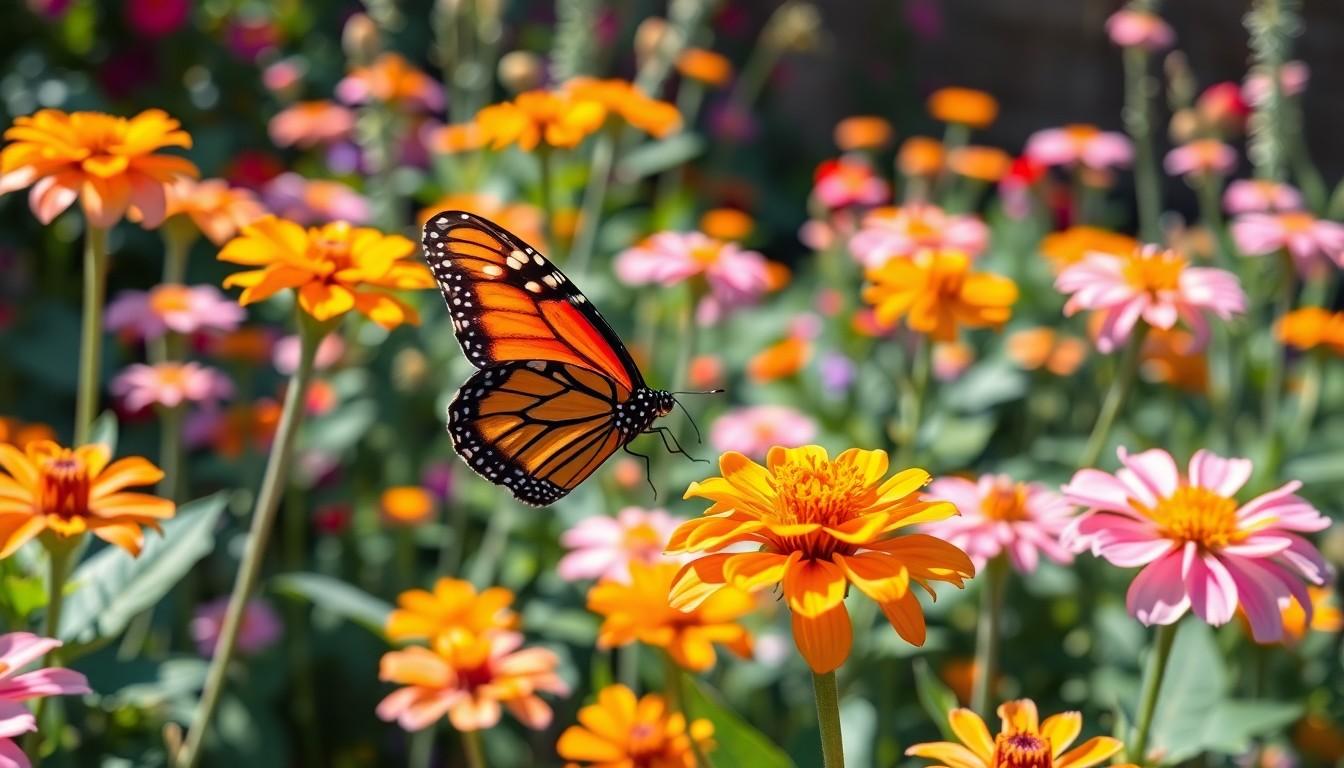When it comes to attracting the beautiful hingagyi butterfly, choosing the right milkweed is like picking the perfect dance partner—it’s all about chemistry. Not all milkweeds are created equal, and selecting the best variety can make or break your butterfly garden. With so many options out there, it’s easy to feel like a kid in a candy store, but fear not!
Understanding Hingagyi
Hingagyi refers to a striking butterfly species known for its vibrant colors and graceful movements. This butterfly plays a crucial role in various ecosystems, primarily through pollination.
What Is Hingagyi?
Hingagyi, scientifically identified as Danaus genutia, thrives in tropical climates. Its wings showcase a palette of orange and black, making it distinct among butterfly species. This butterfly mainly feeds on nectar, engaging with flowers during its active hours. Larval stages rely heavily on specific host plants, particularly milkweeds, for survival and growth. Identifying hingagyi involves observing its size, typically spanning 2.5 to 3 inches in wingspan, alongside its characteristic flight patterns.
Importance of Milkweed for Hingagyi
Milkweed serves as a vital food source for hingagyi caterpillars. Selecting appropriate milkweed varieties is necessary for the lifecycle of this butterfly. The plant supplies crucial nutrients required for growth and development. Additionally, mature hingagyi butterflies depend on milkweed for nectar. This interaction enriches the garden ecosystem, promoting vibrant butterfly populations. Various milkweed species, such as Asclepias tuberosa and Asclepias incarnata, provide excellent support for hingagyi. Prioritizing these plants enhances both the beauty and ecological value of butterfly gardens.
Types of Milkweed

Selecting the right milkweed variety is essential for attracting hingagyi butterflies. Various milkweed types cater to different needs, which can enhance the garden’s ecological environment.
Common Milkweed Varieties
Asclepias tuberosa, commonly known as butterfly weed, features bright orange flowers. This variety thrives in well-drained soils and prefers full sun exposure. Another popular choice is Asclepias incarnata, or swamp milkweed, which has pink flowers and enjoys damp habitats. Both types provide necessary nectar for adult hingagyi butterflies and serve as ideal host plants for their caterpillars. Gardeners often appreciate these varieties for their beauty and ability to support butterfly populations.
Native Milkweed Species
Native milkweed species contribute to the local ecosystem and sustain specific butterfly species. Asclepias syriaca, or common milkweed, grows in diverse environments and produces large, round clusters of purple flowers. This species attracts various pollinators, including being a host for many butterfly caterpillars. Another native option is Asclepias exaltata, known as tall milkweed, featuring tall stalks and clusters of white flowers. Selecting native species fosters biodiversity while promoting healthy hingagyi butterflies in the garden.
Choosing the Right Milkweed for Hingagyi
Selecting the appropriate milkweed variety significantly impacts the growth of hingagyi butterflies in gardens. Different species serve unique needs for both the caterpillars and adult butterflies.
Factors to Consider
Choose milkweed that thrives in your climate and soil conditions. Native species often adapt better to local ecosystems. Consider the plant’s mature size, as larger varieties might overshadow smaller plants. Flower color and bloom time attract adult butterflies, enhancing nectar availability. Additionally, choose varieties that resist pests and diseases for healthier growth.
Recommended Milkweed Species
Prioritize Asclepias tuberosa, known for its vibrant orange blooms and drought resistance. Asclepias incarnata, or swamp milkweed, offers attractive pink flowers and thrives in moist areas. Consider Asclepias syriaca for its robust nature and ability to support biodiversity. Asclepias exaltata, also known as tall milkweed, grows well in shaded environments and attracts a variety of pollinators. Each variety enhances the garden’s aesthetic while ensuring sufficient support for hingagyi populations.
Supporting Hingagyi with Milkweed
Selecting the right milkweed variety transforms gardens into thriving habitats for hingagyi butterflies. Different types of milkweed suit varying environmental conditions, promoting butterfly growth and development.
Creating the Right Habitat
Creating an ideal habitat involves considering sunlight, soil type, and moisture levels. Asclepias tuberosa prefers well-drained soil and full sun exposure, making it an excellent choice for sunny gardens. Meanwhile, Asclepias incarnata thrives in moist, rich soils, perfect for wetland gardens. Both plants provide essential nectar for adult butterflies while serving as host plants for caterpillars. Incorporating native varieties, such as Asclepias syriaca, further contributes to local ecosystems. Gardens that feature these milkweed types attract hingagyi butterflies, promoting biodiversity and ecological balance.
Maintenance and Care for Milkweed Plants
Maintenance and care ensure healthy milkweed plants flourish in gardens. Regular watering helps establish strong root systems, particularly during the first growing season. Pruning encourages new growth and prevents overcrowding among plants. Fertilization with organic compost enhances soil health and boosts flowering. Monitoring for pests, such as aphids, is vital; control measures may include introducing beneficial insects like ladybugs. Regular observation promotes longevity and vibrancy of both milkweed and hingagyi populations.
Conclusion
Choosing the right milkweed is essential for fostering a thriving hingagyi butterfly population in any garden. By selecting varieties that cater to the specific needs of these beautiful butterflies, gardeners can create a vibrant and sustainable environment. Native species like Asclepias tuberosa and Asclepias incarnata not only enhance the garden’s visual appeal but also provide critical support for both caterpillars and adult butterflies.
Gardeners should consider factors such as climate adaptability and soil conditions to ensure the best growth and health of their milkweed plants. With proper care and attention, these plants can flourish, attracting hingagyi butterflies and contributing to local biodiversity. Ultimately, the right milkweed selection leads to a flourishing butterfly garden that delights both nature enthusiasts and the ecosystem alike.




